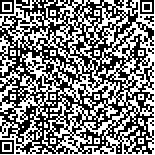刘芳,刘建宜,郑颖彦,等.磁共振扩散张量成像在高压氧治疗创伤性脊髓损伤大鼠疗效评估中的应用[J].中华物理医学与康复杂志,2022,44(4):289-293
扫码阅读全文

|
| 磁共振扩散张量成像在高压氧治疗创伤性脊髓损伤大鼠疗效评估中的应用 |
|
| |
| DOI:10.3760/cma.j.issn.0254-1424.2022.04.001 |
| 中文关键词: 高压氧治疗 脊髓损伤 磁共振成像 扩散张量成像 大鼠 |
| 英文关键词: Hyperbaric oxygenation Spinal cord injuries Magnetic resonance imaging Diffusion tensor imaging |
| 基金项目:福建省自然科学基金(2016J01526) |
|
| 摘要点击次数: 4603 |
| 全文下载次数: 5404 |
| 中文摘要: |
| 目的 探讨磁共振扩散张量成像(DTI)在高压氧治疗创伤性脊髓损伤(TSCI)大鼠疗效评估中的应用价值。 方法 应用改良的Allen′s法制备大鼠TSCI模型30只,按随机数字表法分为脊髓损伤组(损伤组)15只和脊髓损伤高压氧治疗组(治疗组)15只。治疗组TSCI后每日干预2次,连续干预3 d后每日干预1次,共干预4周,损伤组TSCI后不进行高压氧干预。2组大鼠均于损伤后即刻、6 h、24 h、3 d、7 d、14 d、21 d、28 d行3.0T DTI检查和大鼠运动功能评分(BBB评分)。采用两因素重复测量方差分析评估2组大鼠间DTI特征性参数值[部分各向异性(FA)、平均表观弥散率(MD)、径向弥散率(RD)及轴向弥散率(AD)]以及BBB评分的差异性,同时运用LSD-t检验分析2组大鼠上述各参数在各时间点的组间差异。 结果 损伤24 h、3 d、7 d、14 d、21 d、28 d后,治疗组的FA值均显著高于损伤组同时间点,差异均有统计学意义(P<0.05)。损伤24 h、3 d、7 d、14 d、21 d、28 d后,治疗组的MD值和RD值均显著低于损伤组同时间点,差异均有统计学意义(P<0.05)。损伤14 d、21 d、28 d后,治疗组的AD值均显著高于损伤组同时间点,差异均有统计学意义(P<0.05)。损伤3 d、7 d、14 d、21 d、28 d后,治疗组的BBB评分均显著高于损伤组同时间点,差异均有统计学意义(P<0.05)。 结论 DTI特征性参数可较好地评估脊髓功能,并可为高压氧治疗TSCI大鼠后的动态评估提供有价值的信息。高压氧治疗有助于TSCI大鼠运动功能的恢复。 |
| 英文摘要: |
| Objective To explore the value of diffusion tensor imaging (DTI) in evaluating the effects of hyperbaric oxygen therapy (HOT) in treating spinal cord injury. Methods The modified Allen′s method was used to induce a traumatic spinal cord injury in 30 rats who were then divided randomly into an injured group and a treatment group, each of 15. The treatment group was given HOT twice a day for 3 days, then once a day for a total of 4 weeks. The injured group did not receive HOT. DTI was performed (along with Basso-Beattie-Bresnahan (BBB) evaluation) at 0h, 6h, 24h, as well as 3, 7, 14, 21 and 28 days after the operation. Two-factor repeated measures ANOVA was conducted to analyze any differences in the DTI results: the fractional anisotropy, mean apparent diffusivity, radial diffusivity and axial diffusivity, as well as the BBB scores. LSD t-tests were performed to analyze the significance of the differences at different time points. Results At each time point after 24h the average FA value of the treatment group was significantly higher than the injured group′s average, while its average MD and RD values were significantly lower. Beyond 14 days the average AD value of the treatment group was significantly higher than that of the injured group. The treatment group′s average BBB score was also significantly higher at all the time points beyond 3 days. Conclusions DTI results can evaluate spinal cord function and provide valuable information for the dynamic assessment of hyperbaric oxygen therapy after a traumatic spinal cord injury, and the therapy promotes the recovery of motor function, at least in rats. |
|
查看全文
查看/发表评论 下载PDF阅读器 |
| 关闭 |